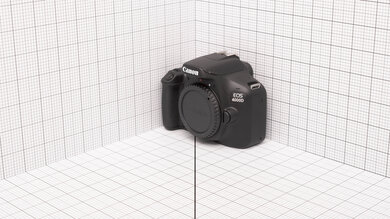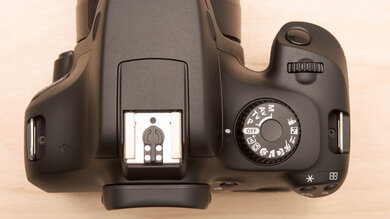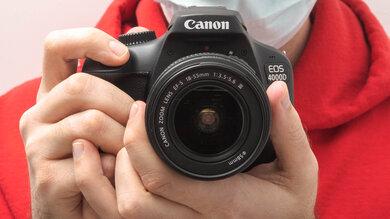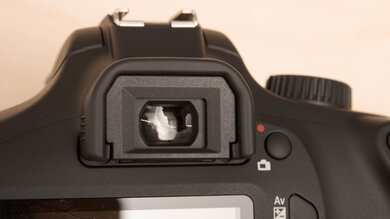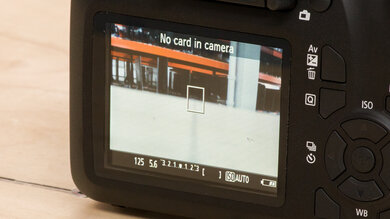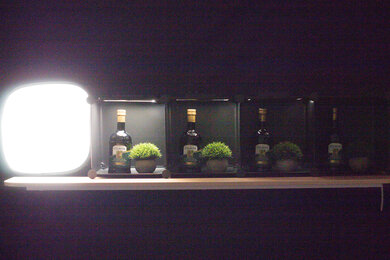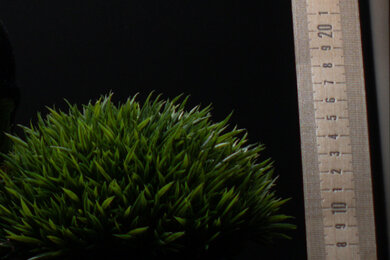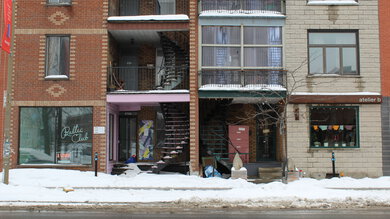The Canon EOS Rebel T100/4000D is a simple crop-sensor DSLR. It offers little in the way of frills or extra features, with no 4k recording capability and few physical controls. As a photography camera, it's an okay entry-level model for the price, with a decent sensor, a passable autofocus system, and plenty of great, affordable lens options, but its cheap price tag comes through in its plasticky build quality and low-resolution screen.
Our Verdict
The Canon Rebel T100 is alright for travel photography. It has a high-resolution sensor that can capture high-quality images for its class, and there are plenty of great Canon DSLR lenses to choose from. It also has a good autofocus system for still subjects, but it's less suitable for faster subjects and busier scenes. Unfortunately, it isn't the most portable option, especially compared to mirrorless alternatives, and its build quality leaves a lot to be desired. On the upside, it has a solid battery life, though you can't charge it via USB, which can be inconvenient.
- Solid image quality for its class.
- Good photo battery life.
- Plenty of lens options.
- Bulky, plasticky design.
- Doesn't support USB charging.
- Fixed, low-resolution screen.
The Canon Rebel T100 is okay for landscape photography. It offers good overall image quality for its class, especially if you pair it with a high-quality lens, and thankfully, Canon has plenty of good wide-angle DSLR lenses for landscape photography. However, the camera's dynamic range is mediocre, meaning it can't capture as wide an array of detail in high-contrast landscapes. On top of that, its mostly plastic construction doesn't feel especially sturdy and isn't weather-sealed.
- Solid image quality for its class.
- Good photo battery life.
- Plenty of lens options.
- Bulky, plasticky design.
- Fixed, low-resolution screen.
- Dynamic range is mediocre.
The Canon Rebel T100 isn't a great choice for sports and wildlife. Its slow max shooting speed makes capturing bursts of fast-moving subjects harder. Also, its autofocus system may be decent for static subjects, but it lacks an AF tracking feature when shooting continuously, and it falls short of the standard set by modern mirrorless cameras. The camera doesn't feel especially well-built, either. On the upside, image quality is good for its caliber, with fair noise handling and nice colors straight out of the camera.
- Solid image quality for its class.
- Good photo battery life.
- Plenty of lens options.
- Bulky, plasticky design.
- Fixed, low-resolution screen.
- Very slow max burst rate.
The Canon Rebel T100 isn't meant for vlogging. Its fixed screen doesn't let you see what you're recording when the camera is pointed at you. Its bulky design also makes it more of a hassle to carry around for extended periods. That aside, it can't record 4k video, and its 1080p video quality leaves much to be desired. Plus, it doesn't support continuous autofocus in video.
- Easy-to-use menu system.
- Poor FHD video quality.
- No 4k recording.
- Fixed screen can't be seen when camera is pointed at you.
- No continuous tracking autofocus while recording video.
The Canon Rebel T100 isn't meant for studio video. It can't record 4k video, and video quality in 1080p isn't amazing, with a lack of detail and heavy noise in low light. It's also missing inputs and outputs for various video peripherals like a microphone or headphones. On top of that, video recording is capped to a recording time limit of about 12 minutes.
- Easy-to-use menu system.
- Poor FHD video quality.
- No 4k recording.
- No continuous tracking autofocus while recording video.
- Limited selection of inputs and outputs.
The Canon Rebel T100 isn't designed for action video. It's too big to be attached to a chest or helmet rig, doesn't feel especially robust, and isn't weather-sealed. It doesn't have 4k video capability, either, and frame rates in 1080p are limited, with no high-speed recording options.
- Easy-to-use menu system.
- Bulky, plasticky design.
- Poor FHD video quality.
- No 4k recording.
- No high-speed frame rates.
The Canon Rebel T100 has okay RAW image quality. Images look sharp and detailed thanks to its relatively high-resolution sensor. However, its dynamic range is limited, especially compared to newer models and cameras with larger sensors, so you'll lose out on either highlight or shadow detail in contrasty scenes. It also does an okay job of managing noise levels in low-light situations, but with a max ISO setting of 6400, it isn't the best option for really tricky or dim lighting.
- High resolution sensor.
- Dynamic range is mediocre.
Performance Usages
Changelog
- Updated Feb 24, 2025: We've converted this review to Test Bench 0.13. We've added new tests for Video Dynamic Range and Luminosity Patch Detection. You can learn more about these updates in the changelog.
-
Updated Dec 18, 2024:
We added a comparison to the KODAK PIXPRO AZ528 in the Build Quality box.
- Updated Jul 10, 2024: We updated this camera's name from 'Canon EOS Rebel T100 / EOS 4000D' to 'Canon EOS Rebel T100/4000D' and tweaked some of the text in the Differences Between Variants section of the review for clarity.
- Updated Jan 30, 2024: Brushed up text throughout the review for clarity.
Check Price
Differences Between Sizes And Variants
The Canon T100 is only available in one color: 'Black,' and you can see our unit's label here. This camera is also sold as the Canon EOS 4000D in other markets. The camera is only sold in a bundle with the Canon EF-S 18-55mm f/3.5-5.6 III kit lens, and you can buy the same kit bundled with various accessories, depending on the retailer.
Let us know if you come across a different variant of the Canon Rebel T100, so we can update our review.
Popular Camera Comparisons
The Canon Rebel T100 is an entry-level budget DSLR camera. It's about as simple a DSLR as you can get, with a limited set of features and physical controls. Its low cost is also apparent in its build quality, which feels notably less robust than pricier models. On the flip side, its simplicity and affordable price make this a solid option for beginners or those wanting to get into "proper" photography on a very tight budget. On top of that, Canon's EF/EF-S mount includes a very well-established range of lenses that can elevate your photography, including plenty of more affordable options.
For more options, you can also check out our buying guides for the best beginner cameras, the best cheap and budget cameras, or the best cameras under $1,000.
The Canon EOS Rebel T7/2000D is a bit better than the Canon EOS Rebel T100/4000D, though they're very similar overall. Both are simple, budget DSLR cameras that can be paired with Canon EF-S or EF lenses. While both use APS-C sensors, the T7 has a higher resolution, creating slightly more detailed images with a bit more leeway to crop. The T7 also has a slightly larger and higher-resolution screen, and its materials feel a bit higher quality, but otherwise, the two cameras perform very similarly.
The Nikon D3500 is better than the Canon EOS Rebel T100/4000D. Both are entry-level DSLRs with APS-C sensors; however, the Nikon feels a little better constructed and has a higher-resolution sensor and better processor, resulting in better overall image quality. The D3500 also has a faster burst rate and a much longer battery life and includes a built-in 'Guide Mode' to walk new users through the camera's features.
The Canon EOS Rebel T100/4000D is better than the KODAK PIXPRO AZ528, primarily because it's an interchangeable lens camera that offers more versatility. It also supports RAW photos and has a viewfinder, better autofocus, and a much better battery life. Image quality is also significantly better thanks to its larger, higher-resolution sensor.
Test Results

The Canon Rebel T100 is fairly portable as far as DSLRs go. However, it's much bulkier than mirrorless alternatives like the Canon EOS M50 Mark II. Still, it doesn't weigh a ton, so it's still fairly easy to carry around for long periods without fatigue.
The Canon T100 doesn't feel especially well-built, but that's one of the trade-offs of a cheaper camera like this. The materials feel even less robust than the Canon EOS Rebel T7 / EOS 2000D or even a cheap bridge camera like the KODAK PIXPRO AZ528. Unlike other models, there isn't even a dedicated power switch; you simply turn the mode dial to turn the camera on. There's no dial lock, though, so you could easily turn the camera on by accident and drain the battery. On the upside, the buttons provide decent physical feedback, though the camera can be somewhat sluggish to respond to inputs.
The camera's ergonomics are okay. The handgrip can feel somewhat cramped for those with very large hands, but otherwise, it's well-shaped, and the texture provides a secure grip. Since it's an entry-level model, there aren't too many buttons or control dials, which is good for beginners but makes it a lot harder for more advanced shooters to adjust settings when shooting in manual mode.
The Canon T100 has a fixed screen, which makes it harder to shoot from unconventional angles. The screen isn't as sharp as the one on the slightly pricier Canon EOS Rebel T7 / EOS 2000D and can't get as bright. It isn't touch-sensitive, either, so you have to use the D-pad to navigate the menu and adjust the settings.
As is typical of more Canon cameras, the user interface is great. For the most part, it's well-organized and easy to use and functions very similarly to the menu found on the Canon EOS Rebel T7 / EOS 2000D, despite some minor differences. Some settings are only available when the camera is in the relevant mode. For example, video settings can only be accessed when you switch the camera into video mode, while some options are only visible when you switch into Live View.
The camera has a 'Feature Guide' function, which gives you a brief description of the different shooting modes and quick menu settings, but this camera doesn't have a more extensive guide mode to explain every feature. However, Canon does have a 'Canon Coach' app that you can download, which provides camera tutorials for novice users.
The Canon T100 uses an APS-C sensor with a fairly high 18-megapixel count. That isn't as much resolution as newer models, like the mirrorless Canon EOS R100 or even the Canon EOS Rebel T7 / EOS 2000D, but it's still plenty of resolution to capture sharp-looking images, especially if you're mostly sharing online. It uses the same DIGIC 4+ processor as the T7.
The camera's battery life in photos is great. It's CIPA-rated for 500 shots on a full charge. While that can vary drastically with real-world usage, it gives a good indication of how the camera performs compared to other models. Generally speaking, the T100 is better than most mirrorless cameras, but it falls short of higher-end DSLR cameras like the Nikon D5600, which is rated for approximately 970 shots. All in all, it can last fairly long, depending on your shooting habits.
When it comes to video, it can last for almost an hour and a half of continuous video recording in 1080p, which isn't bad considering video isn't this camera's main intended use. However, it's still a fair amount shorter than higher-end or more video-capable cameras like the Canon EOS Rebel SL3, which can record in 4k.
Continuous shooting options are limited. The camera only has one continuous shooting drive mode, with a single slow burst rate. Ultimately, this camera isn't well-suited to capturing quick bursts of fast action, but it's fine if you want to take burst shots of slower-moving subjects.
When shooting in RAW, the buffer will max out at about seven frames, but the shooting speed is so slow that you can shoot JPEG files indefinitely without ever filling up the buffer. Thankfully, the buffer is pretty quick to empty once full, so if you are a RAW shooter, you can get back to shooting without having to wait too long.
Like the Canon EOS Rebel T7 / EOS 2000D, the T100 doesn't have an AF tracking feature that can actively detect and track moving subjects in continuous shooting mode. It supports face detection when using Live View but is limited to single shooting and still subjects.
While there's no proper tracking function, the camera still has a continuous autofocus (AI Servo) mode and does a great job of keeping subjects underneath your chosen focus point in focus. Like most DSLR cameras, the focus area coverage and number of focus points are limited when shooting through the viewfinder. With just nine focus points clustered around the center of the frame, it can't autofocus on subjects at the edges of the frame, so you're somewhat limited in composition. Still, if you're keeping your target in the center point, the camera is quick and accurate, especially with slower, more predictable subjects.
The Canon T100 doesn't have built-in image stabilization, so you'll have to rely on optically stabilized lenses to shoot at a slower shutter speed handheld. We tested stabilization using the Canon EF-S 18-55mm f/3.5-5.6 III kit lens, which isn't optically stabilized and still managed to get clear shots at fairly slow shutter speeds. Of course, even aside from factors like focal length and the physical weight of your lens, stabilization can vary depending on how steady your hands are.
The camera's dynamic range is mediocre. It's notably worse than higher-end Rebels like the Canon EOS Rebel T8i/850D, capturing a smaller range of detail in high-contrast scenes. Depending on how you expose your images, you'll lose a lot of shadow or highlight detail, and it only worsens in dim lighting conditions.
The Canon T100 is decent at resolving fine detail. Although it uses a lower-resolution sensor than the Canon EOS Rebel T7 / EOS 2000D, the level and clarity of fine detail are very similar, even when you punch in.
The camera's RAW noise handling is adequate, though the camera is limited by its max native ISO of 6400, which gives you less flexibility to adjust your exposure in low light. Overall, it performs on par with the Canon EOS Rebel T7 / EOS 2000D and falls behind newer, more powerful mirrorless cameras like the Nikon Z 50.
The Canon Rebel T100 can only record video in Full HD and has very limited video features, but this is a photography-first camera, so that isn't too surprising.
Frame rate options are limited. There aren't any high-speed frame rates for slow-motion video.
Despite having an advertised 30-minute recording time limit, older Canon DSLRs like this one stop recording whenever the video file reaches 4GB in size, giving it an effective time limit of 12 minutes in practice. This isn't a video-centric camera, so bit rates and other specs aren't especially impressive. However, the camera is fine if you want to casually record some videos on the side.
Like the Canon EOS Rebel T7 / EOS 2000D, there's no AI Servo in video mode. That means you can't continuously track a moving subject, which is pretty limiting. You'll have to manually adjust the focus if your subject moves out of the focal plane. Focusing isn't very smooth or quick when using the kit lens. However, it's fine for more static subjects or talking head shots, for instance, where your subject stays in one place.
The rolling shutter isn't too bad, though you'll still notice some slanting vertical lines and distortion with very quick camera movements.
Inputs and outputs are minimal. There's a mini USB port for transferring files and a mini HDMI input to connect the camera to an external display. Unlike the Canon EOS Rebel SL3, the T100 doesn't have a microphone or headphone jack for video peripherals. Unlike many newer cameras, it also lacks Bluetooth capability for wireless connectivity.

